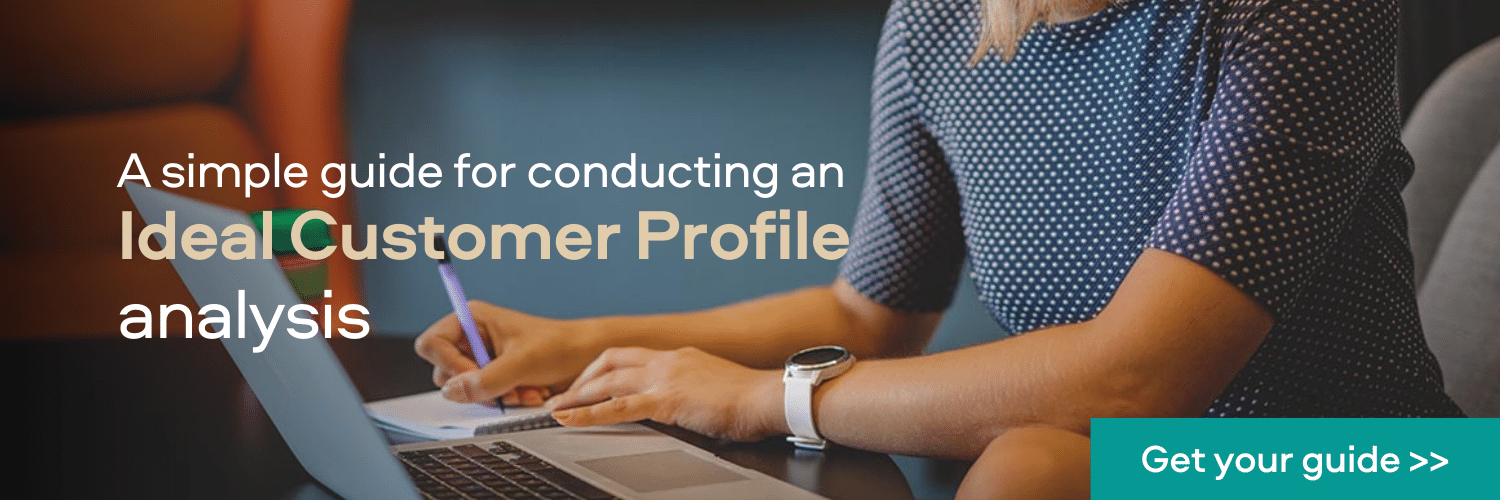3 Lead Generation Strategies to Convert Your Site Visitors Into Leads
Obviously, knowing what something is is important. However, the practical value often comes from knowing how to do that something, not simply knowing what that something is. On the back of this very smooth introduction, we’ll be starting our discussion of the lead generation strategies that you should incorporate into your inbound marketing practices to ensure a steady flow of new leads.
3 fundamental lead generation strategies
In this article, I will be talking you through the three most fundamental top-level aspects to consider when looking at your lead generation processes. A good thing to keep in mind is that these lead generation strategies aren’t mutually exclusive but are best viewed as complementary—they work best together. With that preamble out of the way, prepare yourself, lead gen strategies incoming.
Strategy #1: Invest in content marketing
When you’ve made the decision to generate more interest in your organization and your offering, the first place many look is content creation, which makes sense: what would marketing be without content? So, the question is often not whether content should be produced but rather a question of what content should be produced.
"...the question is often not whether content should be produced, but rather a question of what content should be produced."
The answer to this question will ultimately be dependent on your circumstance—what type of company you’re working for, what you’re selling, etc. For example, it wouldn’t make much sense for health and fitness organizations to produce content about marketing automation. Instead, it would probably be more rationale for them to produce content around concepts such as:
- Nutrition
- Training
- Supplementation
In the same way, you need to first look at your organization and zero in on what it is that you offer. But, as in many other aspects of life, it’s not all about you. You also need to consider what it is your potential customers are in need of or looking for. Personalization is vital for effective marketing, so knowing who it is that you are actually talking to is of great importance when you are creating content. So, take the areas that your organization caters to and begin brainstorming what kind of things an individual would be looking for related to that. Continuing the earlier example, it might then make sense for a health and fitness organization to create content around:
- Healthy food recipes
- At-home workout routines
- Supplements to improve performance
Ultimately, you can make the content as granular as you would like—just try to make sure it is something that is actually important to your audience and that they are aware exists, otherwise it’s unlikely that they will be searching for it. In that vein, it would likely be valuable for you to investigate keyword research to ensure that you are effectively targeting your content.
"Personalization is vital for effective marketing, so knowing who it is that you are actually talking to is of great importance when you are creating content."
If you are looking for a breath of fresh air when it comes to your content ideation, you should consider giving our content marketing blog a read. It discusses “triggers events” and demonstrates the way in which they can be an invaluable source of new content ideas.
Shake up the ingredients
Once you’ve figured out what your content should be about, you need to figure out what form it will take. Below are some different content forms to get you thinking:
- Blogs
- E.g. a short written text that introduces a recipe, explains why it is beneficial and tells you how to implement it.
- Ebooks
- E.g. a longer, more in-depth written text that can act as a recipe book
- Videos
- E.g. a video that actually demonstrates how to cook the dish
- How-to guides
- E.g. a written text that explains how to cook the dish in detail
- Case studies
- E.g. a written text explaining how cooking the dish went for a specific individual and what benefits they saw
- Webinars
- E.g. a live interactive video that explains a recipe, or several recipes, and is responsive to participant questions
As you can see, there are a lot of forms that your content could take. Some will require a greater deal of time and research than others, and your visitors may prefer a specific content form for a specific type of content. Search engines might also prefer a specific type of content for a specific search query. Taking all that into account, it might be worthwhile trying different forms of content and seeing what works for your organization and your product. At a minimum, you should bear in mind that different content forms are often used to create a distinction between gated and non-gated content, so, for that reason, it would be helpful to use a variety.
"...bear in mind that different content forms are often used to create a distinction between gated and non-gated content"
In short, non-gated content refers to content that does not require anything from the user for them to be able to access it. Comparatively, gated content would require something, typically an email address, before the visitor would be able to access the content. This distinction actually leads us nicely into our next strategy.
Strategy #2: Create a lot of lead capture opportunities
Lead generation isn’t about getting visitors to your website. If it was, it would be called visitor generation, *ba-dum-tss*. Bad jokes aside, lead generation is about generating leads, which, by their very definition, are actionable. This means that your organization has to be able to contact the individual for the individual to be classified as a lead, which leads to the following question: How do you obtain a site visitor’s contact information?
Do you remember me briefly describing the difference between non-gated and gated content two paragraphs ago? Therein lies the answer—gated content. Some like it, some hate it, but still today, gated content is one of the most common strategies for a marketer to utilize when trying to convert a visitor into a lead. At its core, gated content’s value proposition should be greater than non-gated content and should represent your most premium content, something that warrants asking for your visitors’ contact details—and therefore a conversion. As such, it should be something that is atypically value-adding for the visitor, or something that would require a significant amount of time and effort to replicate.
"gated content...should represent your mosts premium content, something that warrants asking for your visitors' contact details—and therefore a conversion"
Your gated content might, for example, be a template that helps the individual articulate their organization’s ideal customer profile (ICP), which can help them zero in on their most profitable potential customer group and stop them from wasting time on companies that are unlikely to buy. Pretty cool resource, right?
If you want to delve deeper into the topic, I would recommend our gated content blog. It discusses gated content’s nuanced nature and introduces a host of best practices when it comes to its use and implementation, which is information that could be well worth a read.
All in all, it’s important that you consider the struggles of your site visitors. Your non-gated content should be tackling the immediate issue that your site visitor is experiencing, and your gated content should be the extra helping hand that actually facilitates them achieving the eventual desired outcome.
Other lead capturing opportunities
When it comes to lead capturing, diversification is important. Gated content is not the only way to go about generating leads. In fact, there are many other lead capturing opportunities available to the modern marketer, such as:
- Newsletters
- Allows you to continue engaging with interested individuals and show additional value, such as special recipes or updates regarding developments within your company.
- Free trials
- Allows interested individuals to try your product for free and see if it is something that they can derive utility from.
- Live chat
- Allows you to engage and assist a potential lead while they are on your website and interacting with your organization’s resources—talk about a top-of-mind opportunity. These moments can be the perfect time to swoop in and offer supplementary value.
Strategy #3: Make your capture forms easy and simple
Once you’ve written some awesome non-gated content that’s attracted site visitors and produced some insightful gated content that they can’t wait to get their hands on, comes the final hurdle—the capture form. After having fought to get a site visitor to this point, this is the last place you would want to stumble.
Conventional wisdom holds that shorter forms should lead to higher conversion rates. This line of argumentation is based on the idea that shorter forms require less work from the user and offer fewer points of friction, which makes the user more likely to complete the form. Sounds logical enough, right? While not untrue, increasing form conversion rates is not quite as simple as that in practice.
To give credit where credit is due, CXL published a super instructive article on form length and its relationship with conversion rates. I’d definitely recommend giving it a read. Their review of several different case studies found that the relationship between form length and conversion rates, like most other things, is likely to be context-specific, as there are multiple other factors at play that may moderate the proposed relationship. As an example, cutting down on the number of fields was found not to be very beneficial conversion rates when the only fields that are removed are the ones your visitors are motivated by and actually want to interact with.
All that being said, it wouldn’t be very helpful if I left it at that. While I won’t be providing definite answers, I will strive to give you some actionable recommendations that can help you improve the efficacy of your capture forms. In general, it’s a battle between the perceived difficulty of completing the form and the level of motivation that the individual is experiencing. Therefore, your capture form should:
- Be easy to understand and simple to complete
- Not ask for information that can be perceived to be more valuable than the gated content
- Provide sufficient information for accurate lead qualification
"capture forms... [are] are a battle between the perceived difficulty of completing the form and the level of motivation that the individual is experiencing"
Fortunately, with Vainu, the third point becomes somewhat of a non-issue, as you would have access to comprehensive company profiles that would make it easy to qualify your incoming leads. All you would need to ensure is that you get enough information about the new lead to match them to a company.
You got leads… are they good?
If nothing else, I hope that this article helped you to get your brain in gear, got your creative juices flowing, and has given you some ideas for potential measures that you could put into place to improve your lead generation. Once your lead generation is in place, it might be a good time to consider the quality of your leads so that you can optimize the process. Follow our bulletproof lead qualification methodology if you want to learn how to focus on the leads with the highest potential.
If you would like to learn more about Vainu and how to use data to improve your corporate performance, consider subscribing to our newsletter, wink-wink, or try out Vainu yourself–free of charge!

